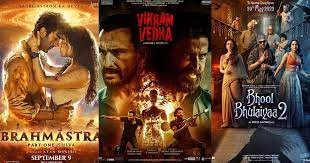Top 10 Finance books you must read
Top 10 Finance Books for Financial Wisdom: Your Path to Prosperity
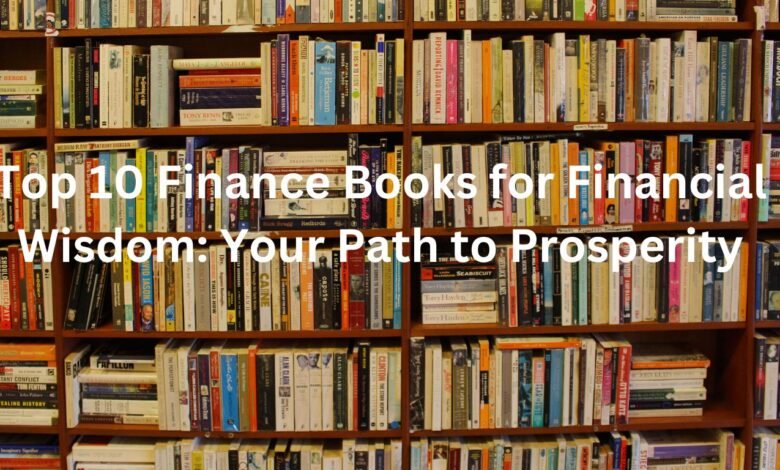
Top 10 Finance books you must read
There are many excellent finance books available that can help you gain a deeper understanding of personal finance, investing, and wealth management. Reading finance books offers several significant benefits, making it a valuable activity for individuals looking to improve their financial well-being and make informed decisions about money.
Why people read finance books:
- Financial Education: Finance books provide structured and comprehensive information about various financial topics, including budgeting, saving, investing, and retirement planning. They serve as a valuable resource for acquiring financial knowledge.
- Empowerment: By educating themselves through finance books, readers gain the confidence and knowledge needed to take control of their financial lives. They become better equipped to make sound financial decisions.
- Improved Money Management: Finance books offer practical tips and strategies for managing money effectively. Readers can learn about budgeting, reducing debt, increasing savings, and investing wisely.
- Wealth Building: Many finance books focus on long-term wealth creation. They teach readers about the power of compound interest, the benefits of investing, and how to build a financial future that goes beyond basic financial security.
- Risk Mitigation: Finance books often cover risk management strategies, including insurance and asset protection. Understanding these principles can help individuals protect their financial assets and plan for unexpected events.
- Retirement Planning: With the challenges of an aging population, many people read finance books to better understand retirement planning. These books offer insights into retirement accounts, investment strategies, and ensuring a financially secure retirement.
- Investment Knowledge: Finance books are a valuable resource for those interested in the world of investing. They cover various investment options, strategies, and risk management techniques.
- Debt Management: Understanding how to manage and reduce debt is a crucial aspect of personal finance. Finance books provide guidance on paying off debts efficiently and avoiding common debt traps.
- Behavioral Finance: Some finance books delve into the psychology of money and investing, helping readers recognize and overcome common behavioral biases that can lead to poor financial decisions.
- Inspiration and Motivation: Finance books often feature stories of individuals who have achieved financial success. These real-life examples can inspire and motivate readers to take charge of their finances and work toward their goals.
- Tax Planning: Finance books can provide insights into minimizing tax liabilities, taking advantage of tax-advantaged accounts, and understanding the tax implications of various financial transactions.
- Entrepreneurship: Some books explore the world of entrepreneurship, encouraging readers to start their own businesses and manage their finances as business owners.
- Consumer Protection: Understanding financial concepts and products can help consumers make informed choices and protect themselves from scams and unscrupulous financial practices.
Here’s a list of ten finance books that are highly regarded and cover a range of financial topics:
- “The Millionaire Next Door” by Thomas J. Stanley and William D. Danko

Quote: “What you do for a living is not nearly as important as how you manage your money.”
Description: “The Millionaire Next Door” is a book written by Thomas J. Stanley and William D. Danko. Published in 1996, the book explores the common traits and habits of millionaires in the United States. The authors conducted extensive research and surveys to uncover the characteristics that distinguish self-made millionaires from the rest of the population.
The key premise of the book is that many millionaires are not the extravagant, high-profile individuals often portrayed in the media. Instead, they tend to lead frugal and unassuming lifestyles, which is why they can accumulate wealth over time. The book introduces the concept of the “prodigious accumulator of wealth” (PAW) and the “under-accumulator of wealth” (UAW) to classify individuals based on their wealth-building habits.
Some of the main insights and findings in the book include:
- The average millionaire in America is not a flashy spender but rather someone who lives below their means and saves diligently.
- Many millionaires are small business owners and entrepreneurs who have built their wealth gradually through hard work and smart financial choices.
- They tend to invest wisely, avoiding high-risk investments and seeking out opportunities for steady, long-term growth.
- Millionaires often prioritize education and continuous self-improvement, both for themselves and their children.
- They are more likely to be married and stay in long-term, stable relationships, which can provide economic benefits and emotional support.
- The book emphasizes the importance of financial independence and the idea that wealth should be passed on to future generations.
“The Millionaire Next Door” offers practical advice on how to adopt the habits and mindset of the wealthy, such as living frugally, investing wisely, and building a strong financial foundation. It challenges the common misconceptions about millionaires and encourages readers to reevaluate their own financial practices in order to achieve long-term wealth. The book’s insights have made it a classic in the personal finance and wealth-building literature, providing a roadmap for those who aspire to accumulate wealth and achieve financial security.
- “Rich Dad Poor Dad” by Robert Kiyosaki
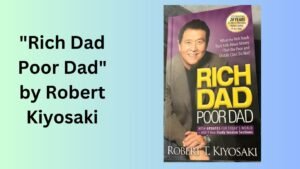
Quote: “The single most powerful asset we all have is our mind. If it is trained well, it can create enormous wealth.”
Description: Rich Dad Poor Dad” is a bestselling personal finance book written by Robert Kiyosaki. First published in 1997, the book has had a significant impact on the way people think about money and financial education. The book is written in the form of a memoir, with Kiyosaki sharing his own experiences and the lessons he learned from two father figures in his life, whom he refers to as “Rich Dad” and “Poor Dad.”
The book’s central theme revolves around the contrast between the financial philosophies and practices of these two father figures:
- Rich Dad: Rich Dad is portrayed as a friend’s father who is a successful entrepreneur and investor. He represents the mindset and principles of financial independence. Rich Dad believes in assets, passive income, and financial education. He emphasizes the importance of building and acquiring assets that generate income and understanding how money works. Kiyosaki’s Rich Dad advocates taking calculated risks and investing in real estate, stocks, and other income-generating ventures.
- Poor Dad: Poor Dad is Kiyosaki’s biological father, who is well-educated and holds a stable job but follows the traditional path of working for a paycheck, saving, and avoiding financial risks. He represents the traditional mindset of getting a good education, working for a steady income, and saving money.
Key lessons and concepts presented in “Rich Dad Poor Dad” include:
- The importance of financial literacy: Kiyosaki argues that understanding financial concepts and investments is essential for achieving financial success.
- The concept of assets and liabilities: Kiyosaki emphasizes the need to focus on acquiring income-generating assets rather than accumulating liabilities.
- The power of passive income: Building income streams that require minimal ongoing effort is key to financial independence.
- The role of entrepreneurship: Kiyosaki encourages readers to consider starting their own businesses and investments to achieve financial freedom.
- Challenging conventional wisdom: The book challenges conventional beliefs about money, work, and retirement, suggesting that many of these ideas are outdated and may not lead to financial success.
“Rich Dad Poor Dad” has been both praised and criticized for its financial advice, but it has undoubtedly had a significant influence on the personal finance and self-help genres. It encourages readers to think critically about their financial decisions and to consider alternative approaches to building wealth. The book’s emphasis on financial education and thinking outside the traditional employment and savings box has resonated with many who seek financial independence and prosperity.
- “The Total Money Makeover” by Dave Ramsey
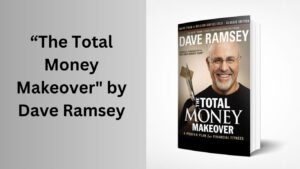
Quote: “If you will live like no one else, later you can live like no one else.”
Description: “The Total Money Makeover” is a personal finance book written by Dave Ramsey, a renowned financial expert, radio host, and motivational speaker. First published in 2003, the book has become a widely respected and influential guide for individuals seeking to regain control over their financial lives, eliminate debt, and build wealth.
The book is structured as a comprehensive financial plan, offering readers a step-by-step approach to achieving financial success. Dave Ramsey’s own experiences with financial hardships and his subsequent journey to financial stability serve as the backdrop for this practical guide. The primary premise of “The Total Money Makeover” is that anyone, regardless of their current financial situation, can take charge of their financial destiny by adhering to a set of principles and implementing specific money management strategies.
Key components and principles explored in “The Total Money Makeover” include:
- Baby Steps: Ramsey presents a series of “Baby Steps,” which serve as a structured, incremental roadmap for transforming one’s financial situation. These steps provide a clear and actionable path toward financial stability and independence.
- Debt Reduction: A central focus of the book is getting out of debt. Ramsey introduces the “Debt Snowball” method, an approach that encourages individuals to pay off their debts, starting with the smallest balances and progressing to the larger ones.
- Emergency Fund: The book underscores the importance of establishing an emergency fund to serve as a financial safety net for unexpected expenses or emergencies.
- Budgeting: Ramsey emphasizes the significance of creating a monthly budget and adhering to it meticulously. He offers practical guidance on effectively tracking income and expenses.
- Investing: “The Total Money Makeover” introduces the concept of responsible investing, particularly after becoming debt-free and building an emergency fund. Ramsey provides recommendations for wealth-building through retirement and other investment accounts.
- Living Within Your Means: Ramsey encourages readers to embrace a lifestyle of living below their means, steering clear of impulsive spending and extravagant living.
- Financial Peace: Throughout the book, Ramsey highlights the emotional and psychological benefits of achieving financial peace and security, which extend far beyond the realm of money.
“The Total Money Makeover” is celebrated for its no-nonsense, straightforward approach to personal finance. It is packed with pragmatic advice, real-life success stories, and practical, actionable steps that empower individuals to regain control over their finances. Dave Ramsey’s message of financial discipline and the “snowball” approach to debt elimination has resonated with countless readers, assisting them in breaking free from the shackles of financial burdens and charting a course towards financial freedom. The book has earned accolades for its motivational tone and user-friendly financial plan, making it an invaluable resource for those who aspire to enhance their financial well-being.
- “The Bogleheads’ Guide to Investing” by Taylor Larimore, Mel Lindauer, and Michael LeBoeuf
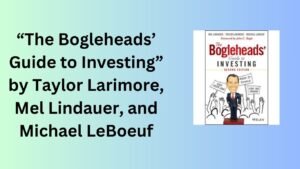
Quote: “Don’t look for the needle in the haystack. Just buy the haystack!”
Description: “The Bogleheads’ Guide to Investing” is a comprehensive and highly regarded investment guide written by Taylor Larimore, Mel Lindauer, and Michael LeBoeuf. The book is based on the investment philosophy of John C. Bogle, the founder of Vanguard Group and an influential figure in the world of low-cost, passive investing. The authors, known as “Bogleheads,” are a community of individual investors who follow Bogle’s principles and promote simple, low-cost, and long-term investment strategies.
Key elements and concepts explored in “The Bogleheads’ Guide to Investing” include:
- Index Fund Investing: The book is centered around the idea of investing in low-cost index funds, which are designed to track the performance of a particular market index, such as the S&P 500. The authors emphasize the advantages of passive investing over actively managed funds.
- Diversification: Diversifying one’s investment portfolio is a central theme. The authors explain the importance of spreading investments across different asset classes to reduce risk and achieve a more balanced and stable portfolio.
- Asset Allocation: The book provides guidance on how to determine an appropriate asset allocation based on an individual’s risk tolerance, financial goals, and time horizon.
- Minimizing Costs: A significant emphasis is placed on minimizing investment costs, including management fees and taxes. The authors advocate for using low-cost index funds and ETFs.
- Long-Term Investing: The book promotes a long-term investment approach and discourages market timing and frequent trading. The Bogleheads argue that patience and discipline are key to achieving investment success.
- Rebalancing: The authors discuss the importance of periodically rebalancing a portfolio to maintain the desired asset allocation and risk profile.
- Behavioral Finance: The book delves into the psychological aspects of investing, addressing common behavioral biases that can lead to poor investment decisions. It offers strategies for overcoming these biases.
- Tax-Efficient Investing: The authors provide insights into tax-efficient investing strategies, such as tax-efficient fund placement and tax-loss harvesting.
“The Bogleheads’ Guide to Investing” is highly praised for its accessibility and readability. It distills complex financial concepts into straightforward language, making it suitable for both novice and experienced investors. The book follows a practical and no-nonsense approach, emphasizing simplicity, low costs, and a focus on the long term. It is a valuable resource for those who are looking to build a solid investment strategy based on the principles of John C. Bogle and the Bogleheads community.
- “A Random Walk Down Wall Street” by Burton G. Malkiel
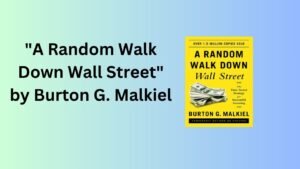
Quote: “In the short run, the market is a voting machine but in the long run, it is a weighing machine.”
Description: “A Random Walk Down Wall Street” is a classic and influential book on the subject of investing and financial markets, written by Burton G. Malkiel. First published in 1973, the book has seen several updated editions, with each edition offering insights into the ever-changing world of finance and investment.
The book’s central idea, reflected in its title, is the “random walk” theory, which suggests that stock prices and other financial assets move randomly and unpredictably in the short term. Malkiel argues that it is nearly impossible for individual investors to consistently outperform the market through stock picking or market timing.
Key concepts and themes explored in “A Random Walk Down Wall Street” include:
- Efficient Market Hypothesis (EMH): Malkiel introduces readers to the concept of the efficient market, which posits that all publicly available information is already reflected in stock prices. As a result, it is challenging to consistently beat the market through stock selection or market timing.
- Passive Investing: The book advocates for passive investing, particularly through index funds, which aim to replicate the performance of a specific market index. Malkiel suggests that this is a cost-effective and reliable way for individual investors to participate in the stock market.
- Risk and Diversification: Malkiel stresses the importance of diversification as a means of reducing investment risk. He explains how different asset classes and investments can be combined in a portfolio to achieve a desired level of risk and return.
- Behavioral Finance: The book delves into the psychological aspects of investing, discussing common investor biases and emotional reactions that can lead to irrational investment decisions.
- Investment Strategies: Malkiel provides an overview of various investment strategies, including buying and holding, asset allocation, and dollar-cost averaging, and discusses their strengths and weaknesses.
- Market Anomalies: The book explores various market anomalies and phenomena, such as bubbles, crashes, and speculative frenzies, offering insights into why these events occur.
- Real-World Examples: Malkiel uses real-world examples and historical data to illustrate the principles he discusses, making the book accessible and engaging for readers.
“A Random Walk Down Wall Street” is known for its balanced and rational approach to investing, and it challenges many popular notions about actively managed investments and market predictions. The book has had a profound impact on the field of investment and has popularized the idea of passive investing, particularly through index funds. Malkiel’s clear and engaging writing style makes complex financial concepts understandable for a wide range of readers, from beginners to seasoned investors. It remains a valuable resource for those seeking to navigate the world of finance and make informed investment decisions.
- “The Richest Man in Babylon” by George S. Clason
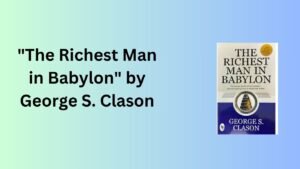
Quote: “A part of all you earn is yours to keep.”
Description: “The Richest Man in Babylon” is a classic personal finance book written by George S. Clason. Originally published in 1926, the book presents timeless financial principles and lessons through a collection of parables set in ancient Babylon. These parables, often featuring characters from Babylon, offer practical and enduring advice on wealth-building, money management, and financial success.
Key concepts and themes explored in “The Richest Man in Babylon” include:
- The Seven Cures for a Lean Purse: The book outlines seven principles for achieving financial prosperity. These include the importance of saving a portion of your income, living within your means, investing wisely, and seeking opportunities for your money to grow.
- Pay Yourself First: The book advocates the idea of paying yourself first by setting aside a fixed percentage of your income for savings and investment before you pay any of your other expenses.
- The Power of Compound Interest: One of the central lessons is the power of compound interest. The book illustrates how regular saving and investing can lead to substantial wealth over time.
- Avoiding Debt: “The Richest Man in Babylon” emphasizes the importance of avoiding excessive debt and paying off outstanding debts as a priority.
- Learning from Mistakes: The parables also underscore the value of learning from your financial mistakes and continuously seeking opportunities to improve your financial knowledge.
- Seeking Wise Counsel: The book encourages seeking the advice of wise and experienced individuals when making financial decisions.
- Opportunities for Investment: The parables illustrate various opportunities for investing and growing wealth, such as real estate, business ventures, and lending money at interest.
The book’s enduring appeal lies in its simple and relatable storytelling style. By presenting financial advice in the form of relatable, ancient tales, it makes the principles of personal finance easily understandable and memorable. “The Richest Man in Babylon” is a valuable resource for those looking to gain a better understanding of financial management and wealth-building, regardless of their level of financial knowledge. Its lessons are universal and have stood the test of time, making it a must-read for anyone interested in improving their financial well-being.
- “Your Money or Your Life” by Vicki Robin and Joe Dominguez
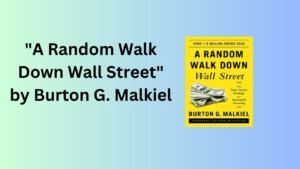
Quote: “Money is something we choose to trade our life energy for.”
Description: “Your Money or Your Life” is a personal finance and self-help book co-authored by Vicki Robin and Joe Dominguez. First published in 1992 and revised and updated several times since, the book has had a lasting impact on the way people think about money, financial independence, and their relationship with material possessions. The book offers a holistic approach to personal finance and encourages readers to rethink their attitudes and behaviors related to money and life choices.
Key themes and concepts explored in “Your Money or Your Life” include:
- Financial Consciousness: The book encourages readers to become more aware of their financial situation and the impact of their spending and earning choices on their overall well-being.
- Tracking and Budgeting: It introduces the practice of closely tracking and recording every expense, which helps individuals gain a clear understanding of their financial inflows and outflows. This data forms the basis of a realistic budget.
- The Money-Life Connection: The book underscores the idea that money is a finite resource and that our choices about spending, saving, and earning are interconnected with our life choices and overall happiness.
- The Fulfillment Curve: “Your Money or Your Life” presents the concept of a “fulfillment curve,” which suggests that there is a point beyond which increased spending doesn’t lead to increased happiness and fulfillment.
- Financial Independence: The authors advocate for achieving financial independence by reducing expenses, saving, and investing wisely. They define financial independence as the point at which income from investments can cover one’s basic living expenses.
- Debt Reduction: The book provides strategies for getting out of debt and staying out of it, emphasizing the importance of living within one’s means.
- Aligning Spending with Values: The authors encourage readers to align their spending with their core values and what truly brings them joy and fulfillment, rather than mindlessly consuming.
- Sustainable Living: “Your Money or Your Life” also touches on the concept of sustainable living and how reducing consumption can have positive environmental and social impacts.
The book’s practical exercises and thought-provoking questions encourage readers to reevaluate their relationship with money and their life goals. It offers a structured program for achieving financial independence and aligning one’s financial choices with personal values and life purpose. “Your Money or Your Life” has been praised for its transformative impact on readers, helping them take control of their financial future and live more intentional, fulfilling lives. It is particularly well-regarded for its emphasis on the connection between money and overall well-being, making it a valuable resource for those seeking financial security and a deeper sense of purpose in their lives.
- “One Up On Wall Street” by Peter Lynch
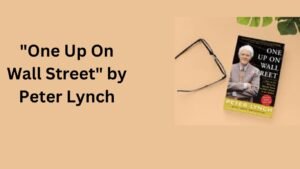
Quote: “The real key to making money in stocks is not to get scared out of them.”
Description: “One Up On Wall Street” is an investment book written by Peter Lynch, a legendary American investor and former portfolio manager of the Fidelity Magellan Fund, one of the most successful mutual funds in history. First published in 1989, the book provides insights into Lynch’s investment philosophy and offers valuable advice to individual investors, particularly those interested in picking individual stocks.
Key themes and concepts explored in “One Up On Wall Street” include:
- Invest in What You Know: Lynch encourages investors to focus on companies and industries they understand and have personal knowledge of. He believes that everyday experiences and observations can lead to investment opportunities.
- The “Peter Lynch Approach”: The book outlines Lynch’s investment approach, which is grounded in fundamental analysis, common-sense research, and a long-term perspective.
- Different Types of Stocks: Lynch categorizes stocks into six types, including slow growers, stalwarts, fast growers, cyclical, asset plays, and turnarounds, providing insights into how to approach each type.
- Stock Research: Lynch discusses his methods for researching stocks, including studying financial reports, assessing company performance, and paying attention to growth trends and competitive advantages.
- The “10-Bagger”: Lynch coined the term “10-bagger” to describe a stock that increases in value tenfold. He explains how investors can identify and benefit from such opportunities.
- Market Timing: Lynch emphasizes the futility of trying to time the market and argues that investors should focus on the quality of individual companies instead.
- The “Peter Principle”: Lynch introduces the “Peter Principle,” which suggests that when a company is doing well, it’s not necessarily a good time to invest in it because the stock may already be overpriced.
- Long-Term Investing: The book promotes the idea of long-term investing, highlighting the potential benefits of holding quality stocks over time.
- Behavioral Finance: Lynch discusses common psychological traps that investors often fall into, such as herd mentality and emotional decision-making, and provides strategies for avoiding these pitfalls.
“One Up On Wall Street” is celebrated for its practical advice and Lynch’s relatable storytelling style. He uses real-world examples from his own experiences to illustrate his investment principles. The book is particularly well-regarded for its guidance on how individual investors can leverage their unique perspectives and insights to make informed investment decisions. While Lynch’s focus on stock picking might not align with all investment philosophies, his approach has resonated with many investors and has had a lasting impact on the world of stock market investing.
- “The Little Book of Common Sense Investing” by John C. Bogle
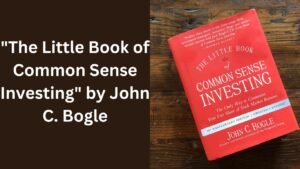
Quote: “In investing, you get what you don’t pay for.”
Description: “The Little Book of Common Sense Investing” is a personal finance and investment book written by John C. Bogle, the founder of Vanguard Group and a pioneer in the field of index investing. Published in 2007, the book presents a compelling argument for a straightforward and cost-effective approach to investing that has the potential to benefit a wide range of investors.
Key themes and concepts explored in “The Little Book of Common Sense Investing” include:
- Index Investing: The book advocates for the concept of index investing, which involves investing in low-cost index funds that aim to replicate the performance of a particular market index, such as the S&P 500. Bogle argues that this passive approach to investing can outperform most actively managed funds over the long term.
- Minimizing Costs: A central theme is the importance of minimizing investment costs. Bogle highlights how the compounding impact of high fees and expenses can significantly erode an investor’s returns over time.
- Market Efficiency: Bogle discusses the efficient market hypothesis, which suggests that all publicly available information is already reflected in stock prices, making it challenging for investors to consistently outperform the market.
- Long-Term Perspective: The book emphasizes the significance of taking a long-term view when it comes to investing. Bogle encourages investors to stay the course and not be swayed by short-term market fluctuations.
- Diversification: Bogle underscores the benefits of diversification and how it can help reduce risk in an investment portfolio.
- Behavioral Finance: The book addresses the psychological aspects of investing and the common behavioral biases that can lead to irrational investment decisions. Bogle offers strategies for overcoming these biases.
- Vanguard’s Approach: Bogle explains the investment philosophy and principles that underpin Vanguard, one of the world’s largest and most respected investment management companies. He highlights Vanguard’s commitment to low-cost, client-focused investing.
- John Bogle’s Legacy: The book serves as a testament to John Bogle’s lifelong dedication to advocating for the interests of individual investors and his relentless pursuit of fair and transparent investment practices.
“The Little Book of Common Sense Investing” is known for its straightforward, no-nonsense approach to investment. It has had a profound impact on the field of personal finance and has popularized the idea of passive investing, particularly through low-cost index funds. Bogle’s message of cost efficiency, long-term thinking, and the merits of simplicity in investing has resonated with countless readers, making the book an essential resource for those looking to achieve financial security and build wealth through sensible and common-sense investment practices.
- “The Intelligent Investor” by Benjamin Graham
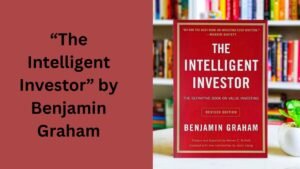
Quote: “The stock market is filled with individuals who know the price of everything, but the value of nothing.”
Description: “The Intelligent Investor” is a classic and influential book on the subject of value investing, written by Benjamin Graham, often referred to as the “father of value investing.” First published in 1949, the book remains highly regarded and widely read by investors, both professional and individual, as a foundational text in the field of finance and investment.
Key themes and concepts explored in “The Intelligent Investor” include:
- Value Investing: The book introduces the concept of value investing, which involves analyzing and investing in stocks and bonds based on their intrinsic value and the margin of safety they provide.
- Market: Graham uses the allegory of “Mr. Market” to explain the volatility of stock prices and how investors should respond to market fluctuations. He advises investors to be rational and disciplined, not swayed by Mr. Market’s mood swings.
- Margin of Safety: Graham emphasizes the importance of a margin of safety in investing. He suggests that investors should buy securities when they are priced significantly below their intrinsic value to protect against downside risk.
- Defensive vs. Enterprising Investors: Graham distinguishes between defensive investors, who prefer a more conservative and passive approach, and enterprising investors, who are more active and willing to take on higher risks for potentially higher returns.
- Market History: The book provides historical context by examining market events and fluctuations to illustrate the principles of value investing.
- Bonds and Preferred Stocks: Graham discusses the characteristics and risks of bonds and preferred stocks, offering insights into how to evaluate these investments.
- Long-Term Investing: The book encourages a long-term perspective, emphasizing the benefits of patience and discipline in achieving investment success.
- Risk Management: Graham addresses the importance of diversification, and he discusses ways to manage risk effectively in an investment portfolio.
- Behavioral Finance: Graham acknowledges the psychological aspects of investing and provides strategies for overcoming common investor biases and irrational behaviors.
- Professional vs. Individual Investors: The book distinguishes between professional and individual investors, with a focus on the needs and capabilities of individual investors.
“The Intelligent Investor” is celebrated for its timeless wisdom and disciplined approach to investing. It offers practical guidance on how to analyze stocks and bonds, build a diversified portfolio, and navigate the ups and downs of the market. Benjamin Graham’s principles have inspired generations of investors, including some of the most successful value investors of our time, such as Warren Buffett. The book remains an essential read for those interested in achieving financial security and success through intelligent and patient investment practices.
Conclusion: In summary, these books collectively emphasize the importance of financial literacy, saving and investing for the future, simplicity in financial strategies, managing risk, adopting a long-term perspective, and continuous learning. They offer various approaches, including value investing, index investing, and behavioral strategies, to help individuals achieve financial success and security.
